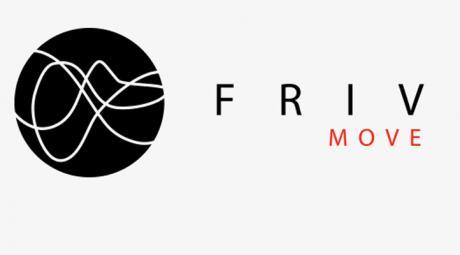
Daisuke Yoshimoto. Fot. Łukasz Giza.
On 12-13 November 2013 Poznań’s ZAMEK Culture Centre is holding a theoretical and practical session on improvisation in dance and music as part of its project Laboratory Friv Move Zamek. Starting off, musicians and dancers will perform short improvised sets (without any prior arrangement), which will then be analysed and discussed by the musicians and dancers themselves, as well as theoreticians of different fields: cognitive science, psychology, philosophy, dance theory, dance, new media, musicology, and culture studies. The process of improvisation will be analysed from different discursive perspectives, corresponding to the participants’ respective fields of research.
The meeting is open to the public: members of the audience are invited to take part in the discussion.
Participants of the meeting:Dr Tomasz Misiak, Joanna K. Malinowska, Irene Cortina Ginzales, Katarzyna Słoboda, Regina Lissowska, Gaja Karoliczak, Marysia Zimpel, Maciej Janasik, Adam Gołębiewski, Hubert Wińczyk, Agnieszka Kowalczyk, Jagna Domżalska, Aniela Kokosza, Patryk Daszkiewicz, Piotr Tkacz, Partyk Lichota, Marta Romaszkan.
THE PROGRAMME:
12 November
10.00 am
Patryk Lichota, Marta Romaszkan – opening address
10.15 am
Improvised set by musicians and dancers
Discussion
12.00
Film block
Discussion
2.30 pm
Joanna K. Malinowska (Institute of Philosophy, Adam Mickiewicz University; School of Form)
At first glance, improvisation seems to be remaining in the present, with the ego being simply anchored in the present moment, subjecting itself to the body, emotions and the situation in which it is. But if you give it more thought, the situation gets more complicated. The ego is always a process of some sort, the process of happening which takes account of the horizon of past events and the events that are expected to happen. The system’s microstructure, reflected in behaviour, is determined, among other factors, by past configurations of environmental stimulators, mental states and expectations. Seen in this way, improvisation becomes the act of externalising the inside and internalising the outside – some time ago, now and in future.
(20 min)
Discussion
3.00 pm
Irene Cortina Gonzales (dancer, choreographer, Valencia/Berlin) – Randomness and authorship in performance
Improvised set by musicians and dancers
8.00 pm
Sound & movement improvisation
Musicians:
Robert Curgenven + Kathleen McDowall (Australia) – performance
Robert Curgenven + Irene Cortina Gonzales, Marysia Zimpel, Marta Romaszkan – improvisation
(http://www.zamek.poznan.pl/news,pl,309,2719.html)
13 November
10.00 am
Improvised set by musicians and dancers
Discussion
Patryk Lichota (Adam Mickiewicz University; HAT Center) Czym jest muzyka improwizowana i jakie są jej potencjalne związki z improwizacją w tańcu [What is improvised music and what are its potential links with dance improvisation]
12.00
Katarzyna Słoboda (Muzeum Sztuki in Łódź) –Przestrzenie improwizacji [Spaces of Improvisation]
(20 min)
+ Presentation of the book “Przyjdźcie, pokażemy Wam co robimy. O improwizacji tańca” [You come, we’ll show you what we do. On dance improvisation], co-edited by Katarzyna Słoboda
http://msl.org.pl/pl/wydarzenia/przyjdzcie-pokazemy-wam/#
Discussion
The essence of improvisation does not lie in spontaneity and freedom of action, but being ready for incessant changes. Making decisions in improvisation is not foreseeing every next set, or simply following an impulse, as it seems not capacious enough to contain all the information and stimuli (coming from the inside and the outside). Making decisions in improvisation is, in my view, being permanently ready for an immediate change in the space of indefiniteness, unpredictability and uncertainty. Uncertainty does not mean that you relinquish making a decision but is the only condition of its occurrence, a potential that is constantly taking shape. Openness is suspending all predictability or “expectedness”; it is not being open to something, but an ungrounded, causeless indefiniteness. Openness to external and internal processes and the fluid boundaries between them, or rather being continuously between them. By “being between them” I do not understand a space between one event and another but continuous opening, becoming, change.
Regina Lissowska (Adam Mickiewicz University) –Kinestezja w teorii tańca [Kinaesthesia in the theory of dance]
2.30 pm
Improvised set by musicians and dancers
Discussion
Gaja KarolczakPraca z percepcją i uważnością w tańcu eksperymentalnym (na przykładzie Debory Hay i Lisy Nelson) i odziaływanie ruchu tancerzy na widza [Working with perception and awareness in experimental dance (based on Deborah Hay’s and Lisa Nelson’s practice) and the influence of dancers’ movement on the audience]
http://phantomsbeyondthebrain.blogspot.com/2013_02_01_archive.html
Marysia Zimpel (dancer, choreographer) Improwizacja z perspektywy tancerza [Improvisation from a dancer’s perspective]
+ Fragments of films devoted to canonical masters of improvisation
Inquiries:friv.move@gmail.com